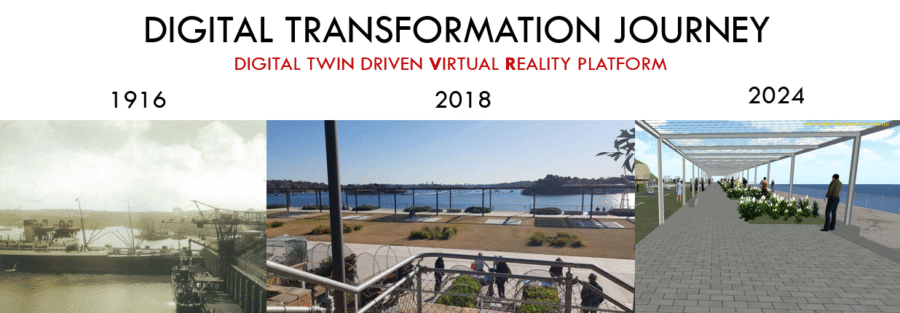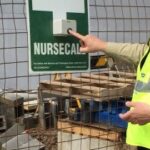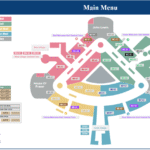Case Study: Digital Twin comes to life in Virtual Reality
Purpose: Demonstrate use-of Virtual Reality with Virtual gateways & Autodesk in a commercial setting
Sector: Smart Cities / Public Sector / Sustainability
Timeline: 2022-2024
Overview:
Following the success of earlier collaborations with North Sydney Council on the Coal Loader Sustainability Centre — where Cypernex delivered an IoT-enabled aquaponics system and a crew-focused coordination app — a new frontier was opened in 2022:
An immersive, interactive Digital Twin brought to life in full virtual reality.
This project, Phase 3 of a multi-year engagement, leveraged the full potential of the Cypernex IoT infrastructure platform to create a VR experience unlike traditional 3D walkthroughs. It enabled real-time interaction with the physical world, creating a living digital replica of the Coal Loader site, complete with users, equipment, dashboards, and dynamic control.
✅ Want to learn about earlier project phases?
[Click here for Phase 1 – Aquaponics IoT Integration]
[Click here for Phase 2 – Operations Coordination App]
The Vision: Beyond a Digital Twin
Rather than a static model or marketing showcase, the goal of Phase 3 was to develop a functional, operational digital twin — one that mirrored not just the layout of the site, but also its behavior, device state, and human interaction. The result was the Cypernex VR-Console, an enterprise-grade virtual environment with real-time data sync, system controls, and live collaboration tools.
Key Features & Capabilities
🔁 Bi-Directional Device Control
Using Cypernex’s Virtual Gateway API, actions in VR control real-world devices — and vice versa. Turn on a light in VR, and it turns on at the actual site. A triggered device in the physical world shows up in real time in the virtual world.
🌐 Multi-User Environment
The site is populated by NPCs of volunteers, staff, or stakeholders who can:
- Occupy buildings, use elevators, doors and pathways for realism
- Meet, talk, and share information with other people visiting the site
- Access equipment controls based on user roles
- Collaborate around dashboards and visual tools
🧠 Smart Technician Tools
Virtual technicians are equipped with advanced interfaces:
- Holographic wristbands expand into equipment control panels
- Pop-up holodesks offer diagnostics and device metadata and situation room coordination
- Asset diagnostics (e.g., sustainability impact, install date) are available contextually based on permissions
Out in site in the physical world, scan equipment QR code and gain immediate access to that machines VR Diagnostic panel using real world AR overlays:
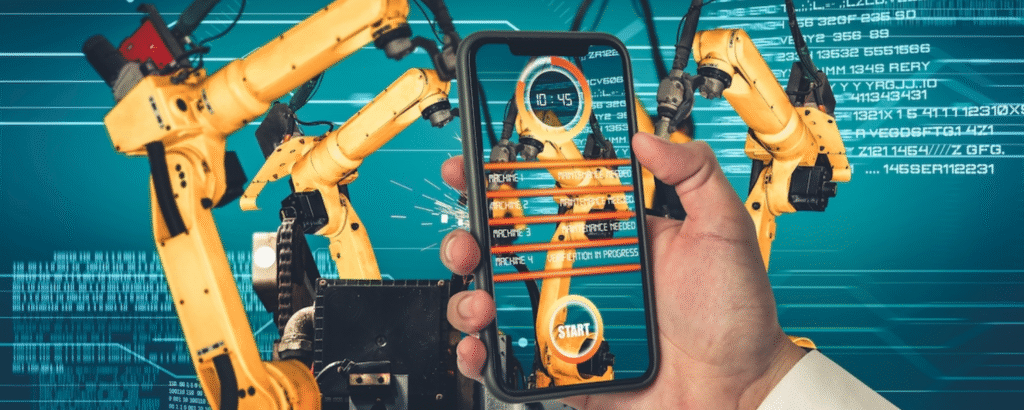
🛠 Self-Updating Digital-Twin
New equipment installed at the physical site is mirrored automatically in VR. No manual modelling is needed — the platform manages placement and linkage seamlessly.
📊 Dashboards Everywhere
Real-world control panels built in Grafana, Tableau, or other platforms can be dropped into the virtual environment — from giant lobby displays to mission-critical KPI dashboards at strategic VR locations.
📊 Virtual access ownership
Spaces and venues have pay for entry control at the user level and buildings or room access is also managed by facilities manager. A number of firms can coexist in a business park, each with ownership and control over their own virtual spaces.
🌍 Environmental Synchronization
The virtual world follows the real world:
Day/night cycles
Seasonal behaviour
Crowds and ambiance
Experience living with sustainable & advanced transportion systems
🗺 Interactive Site Tours & NPCs
Information checkpoints feature interactive NPCs or video explainers, centrally managed via Cypernex’s IoT platform — perfect for educating the public or onboarding new users.
Conversion Steps
Architectural plans (AutoCAD, Revit) were loaded into Autodesk Tandem for data extraction
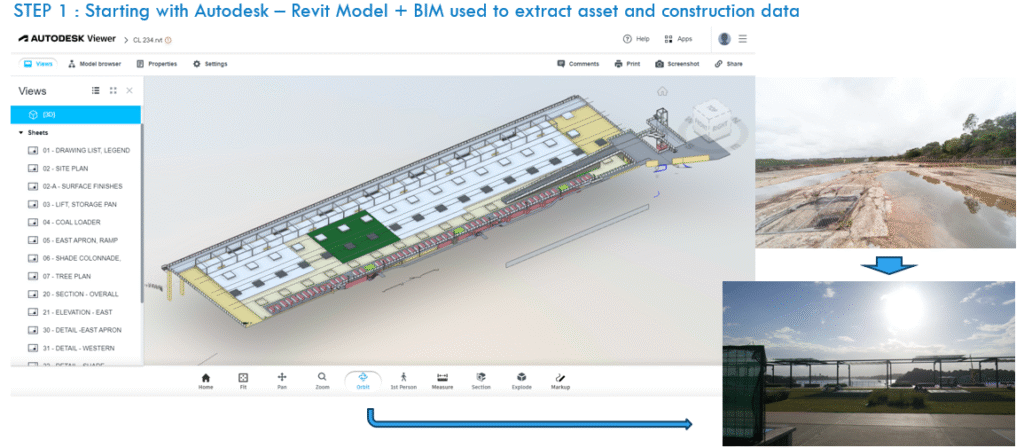
Unity VR project formed the foundation of the digital environment
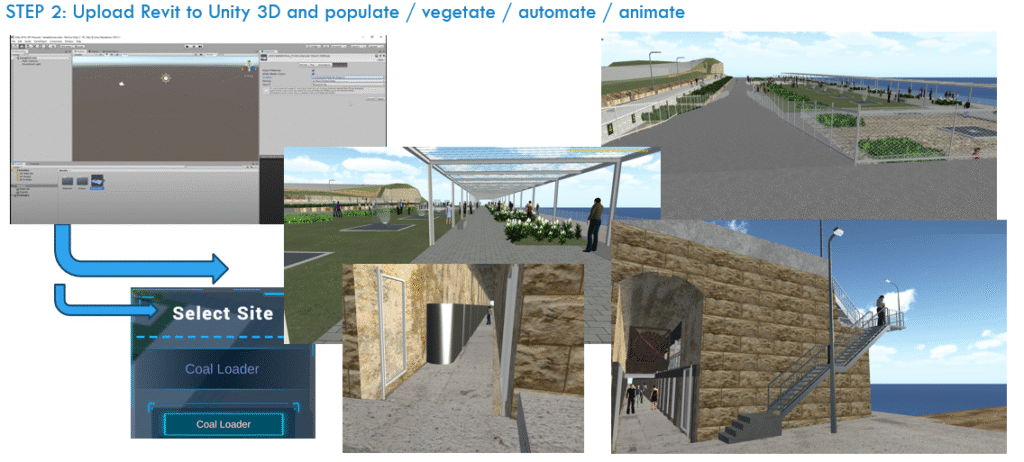
Instal Virtual Gateway extend models with full integration of:
- Cypernex Virtual Gateway
- Real-time IoT device communication
- Operational logic to convert a model into a live business environment
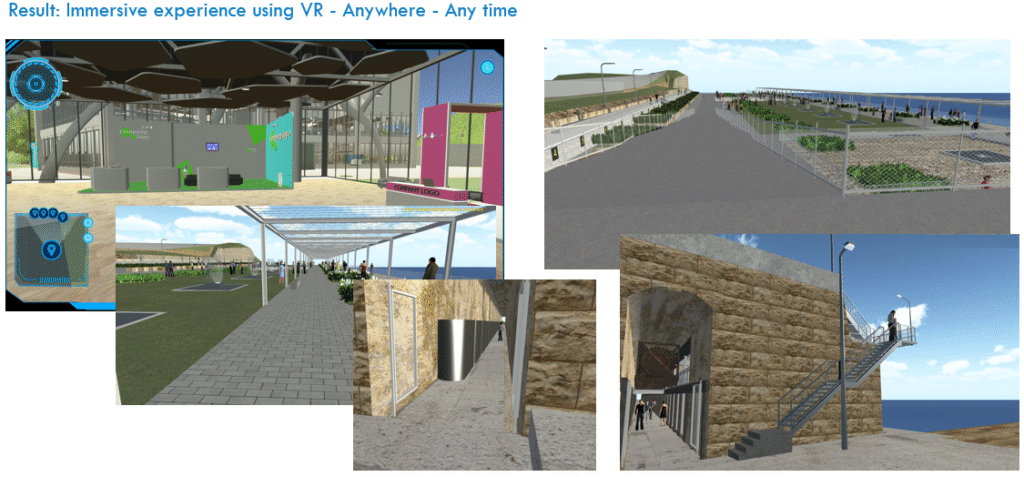
- Improved decision-making during construction (e.g., stair placement near cave openings)
- Collaboration during build via live visualizations
- Cost savings from early IoT and sensor integration
- Smarter cabling plans by simulating infrastructure needs during early phases
- Enhanced biodiversity tracking, like bat population sensors tied to lighting installs
- Retail: Shops, cafes already in the site, have virtual equivalents for on site or local delivery
- Events: Virtual showrooms to showcase products and services at trade shows
- Conferences and Exhibitions that draw virtual attendants or tourists to the physical property
- Advanced transportaion network between relms
- Learning VR workshops in collaboration with schools and universities promoting research and tourism

